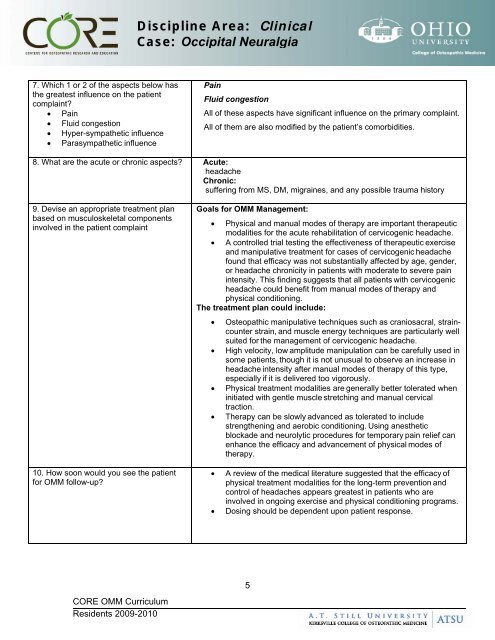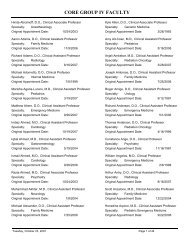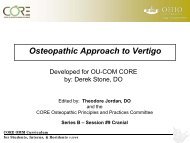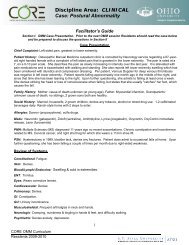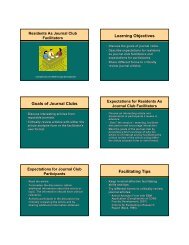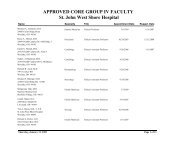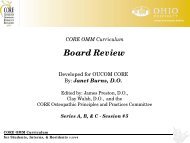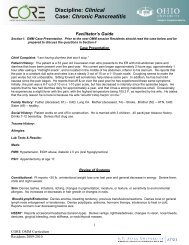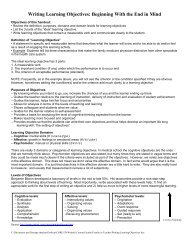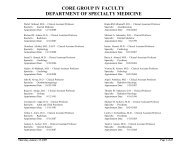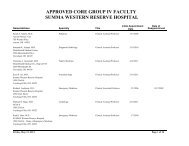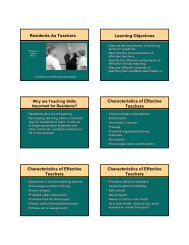Occipital Neuralgia
Occipital Neuralgia
Occipital Neuralgia
You also want an ePaper? Increase the reach of your titles
YUMPU automatically turns print PDFs into web optimized ePapers that Google loves.
Discipline Area: ClinicalCase: <strong>Occipital</strong> <strong>Neuralgia</strong>7. Which 1 or 2 of the aspects below hasthe greatest influence on the patientcomplaint? Pain Fluid congestion Hyper-sympathetic influence Parasympathetic influencePainFluid congestionAll of these aspects have significant influence on the primary complaint.All of them are also modified by the patient’s comorbidities.8. What are the acute or chronic aspects? Acute:headacheChronic:suffering from MS, DM, migraines, and any possible trauma history9. Devise an appropriate treatment planbased on musculoskeletal componentsinvolved in the patient complaintGoals for OMM Management: Physical and manual modes of therapy are important therapeuticmodalities for the acute rehabilitation of cervicogenic headache. A controlled trial testing the effectiveness of therapeutic exerciseand manipulative treatment for cases of cervicogenic headachefound that efficacy was not substantially affected by age, gender,or headache chronicity in patients with moderate to severe painintensity. This finding suggests that all patients with cervicogenicheadache could benefit from manual modes of therapy andphysical conditioning.The treatment plan could include:Osteopathic manipulative techniques such as craniosacral, straincounterstrain, and muscle energy techniques are particularly wellsuited for the management of cervicogenic headache.High velocity, low amplitude manipulation can be carefully used insome patients, though it is not unusual to observe an increase inheadache intensity after manual modes of therapy of this type,especially if it is delivered too vigorously.Physical treatment modalities are generally better tolerated wheninitiated with gentle muscle stretching and manual cervicaltraction.Therapy can be slowly advanced as tolerated to includestrengthening and aerobic conditioning. Using anestheticblockade and neurolytic procedures for temporary pain relief canenhance the efficacy and advancement of physical modes oftherapy.10. How soon would you see the patientfor OMM follow-up?A review of the medical literature suggested that the efficacy ofphysical treatment modalities for the long-term prevention andcontrol of headaches appears greatest in patients who areinvolved in ongoing exercise and physical conditioning programs.Dosing should be dependent upon patient response.CORE OMM CurriculumResidents 2009-20105


